
The Ancient Greek Kouros and Kore
Los kouros y kore son estatuas de piedra caliza, mármol o bronce que se ofrecían a los dioses, y que podían simbolizar un atleta o un difunto. Por ese motivo, normalmente se encuentran en tumbas o santuarios de la época. Son de tamaño natural y pueden llegar hasta los dos metros de altura.
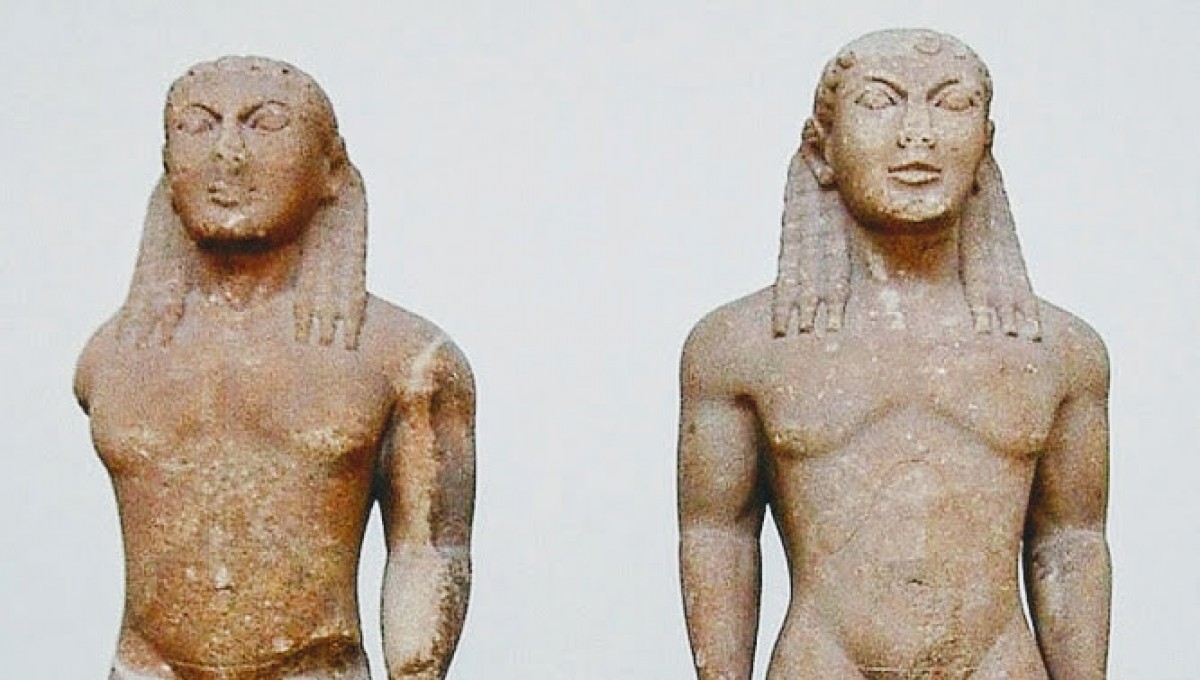
Kouros y Kore, esculturas de la Grecia Arcaica
Kuros. El gran kuros de Samos, el más grande que se conserva en Grecia (Museo Arqueológico de Samos). Un kuros (plural kuroi, del griego κοῦρος, κοῦροι, transcrito a veces erróneamente como kouros) es una estatua de un varón joven, fechada a partir del Periodo Arcaico del arte griego (sobre 650 al 500 a. C.). Es un tipo de.

HISTORIA DEL ARTE temas, imágenes y comentario ** KOUROS DE ANAVYSSOS
Kouros ( Ancient Greek: κοῦρος, pronounced [kûːros], plural kouroi) is the modern term [a] given to free-standing Ancient Greek sculptures that depict nude male youths. They first appear in the Archaic period in Greece and are prominent in Attica and Boeotia, with a less frequent presence in many other Ancient Greek territories such as Sicily.

LA ESTATUARIA GRIEGA DE ÉPOCA ARCAICA. EL SER HUMANO EL KOURÓS Y LA KORÉ. Ancient art, Greek
It is estimated that Kouros and Kore were buried in 480 - 490 BC in ancient Myrrh - now Merenda - just before the Persian invasion. It was a tactic the Athenians followed in times of war when they were forced to leave the city: they hid valuable objects so that the invaders would not destroy them and find them themselves if and when they returned.

Musée Archéologique National d'Athènes Grèce Kore et Kouros Photo Stock Alamy
The Sounion Kouros is an early archaic Greek statue of a naked young man or kouros ( Ancient Greek κοῦρος, plural kouroi) carved in marble from the island of Naxos around 600 BCE. It is one of the earliest examples that scholars have of the kouros-type [1] which functioned as votive offerings to gods or demi-gods, and were dedicated to heroes.
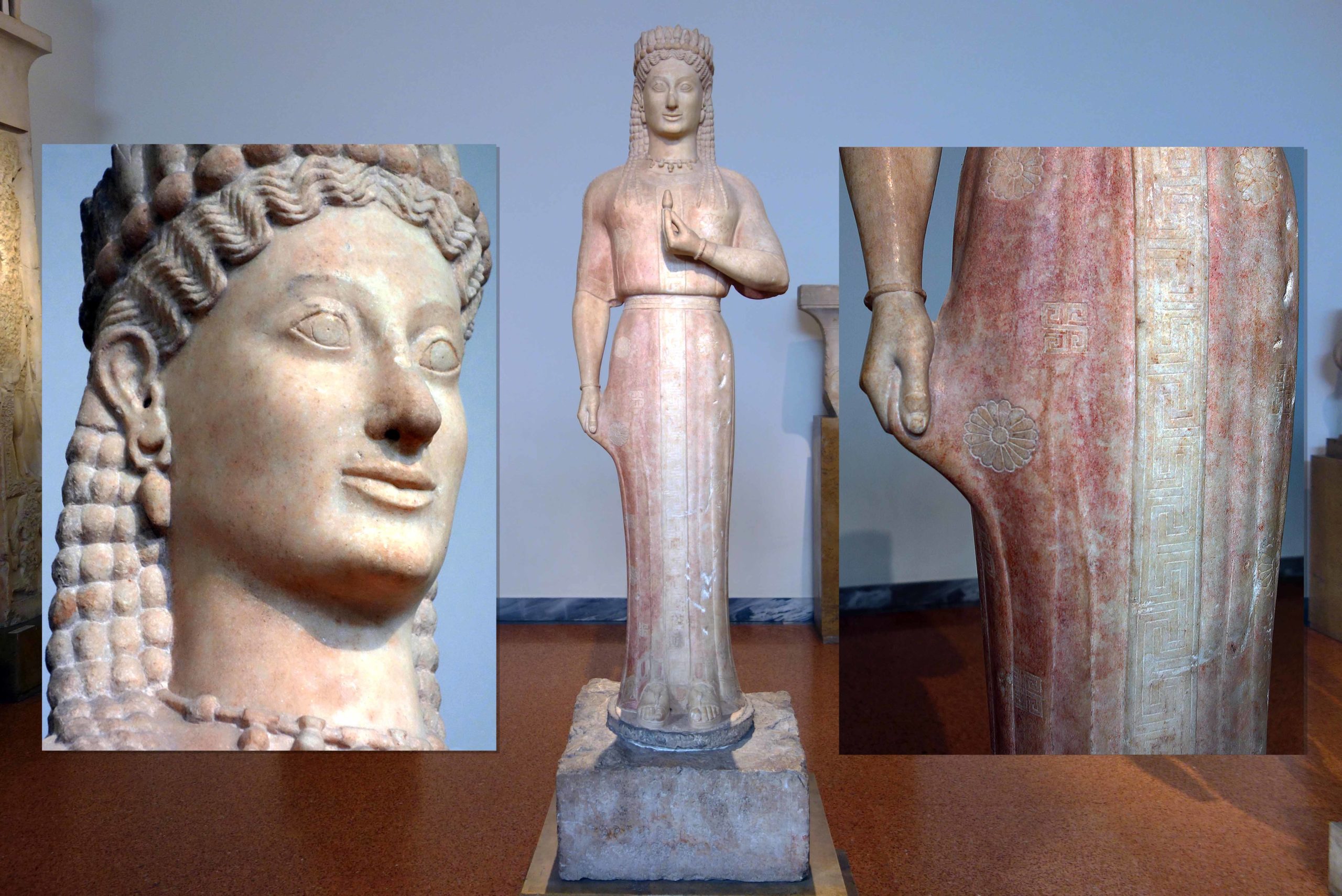
» Kouroi and Korai, an introduction
The Anavysos Kouros, a life-size sculpture from ancient Greece's archaic period, represents an ideal male youth. Inspired by Egyptian art, these kouros figures evolved from stiff, blocky forms to more natural, rounded shapes. Often used as grave markers, they symbolize nobility and strength.

Kouros from thebes Ancient greece, Archaic greece, Ancient greek sculpture
By definition, Kore (maiden) refers to statues depicting female figures, always of a young age, which were created during the Archaic period (600 - 480 BCE) either as votive or commemorative statues.

Le sculture greche Koúroi e Koúros Scultura, Grecia
kouros, archaic Greek statue representing a young standing male. Although the influence of many nations can be discerned in particular elements of these figures, the first appearance of such monumental stone figures seems to coincide with the reopening of Greek trade with Egypt ( c. 672 bc ).

Statue of Kore (young woman) and a Kouros (young man) in the National Archaeological Museum of
[Poly?]medes of Argos, kouroi of Kleobis and Biton, early 6th century B.C.E., found at the sanctuary of Apollo, Delphi, Greece (Delphi Archaeological Museum; photo: Steven Zucker, CC BY-NC-SA 2.0)
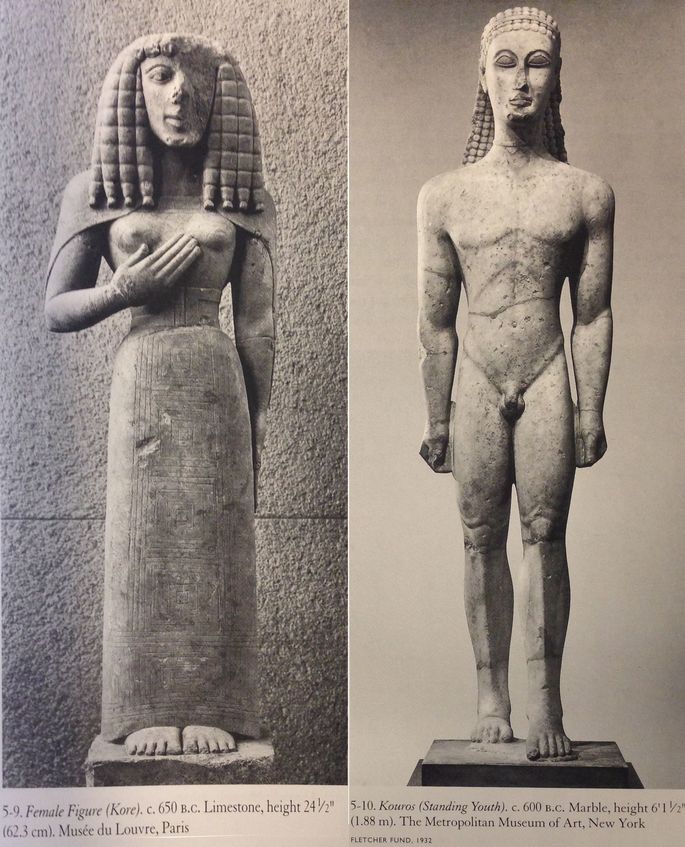
Arte Grega da Antiguidade características e principais obras Cultura Genial
The images of nude young men are today called kouroi (singular: kouros), the ancient Greek word for boy, though we do not know if they were called kouroi in antiquity. Their female counterparts, korai (singular: kore), wear richly painted robes and accessories made of expensive metals. Kouroi and korai are highly idealized images.

Algargos, Arte e Historia LA ESTATUARIA GRIEGA DE ÉPOCA ARCAICA. EL SER HUMANO EL KOURÓS Y LA
Kouros y Kore, esculturas de la Grecia Arcaica Las representaciones escultóricas de un muchacho (kouros) o una muchacha (Kore) durante el llamado Periodo Arcaico de la Grecia antigua, encierran una belleza enigmática que aún sigue emocionando a quien se aproxima a ellas. Por Alma Leonor 20 de marzo de 2018 13:00
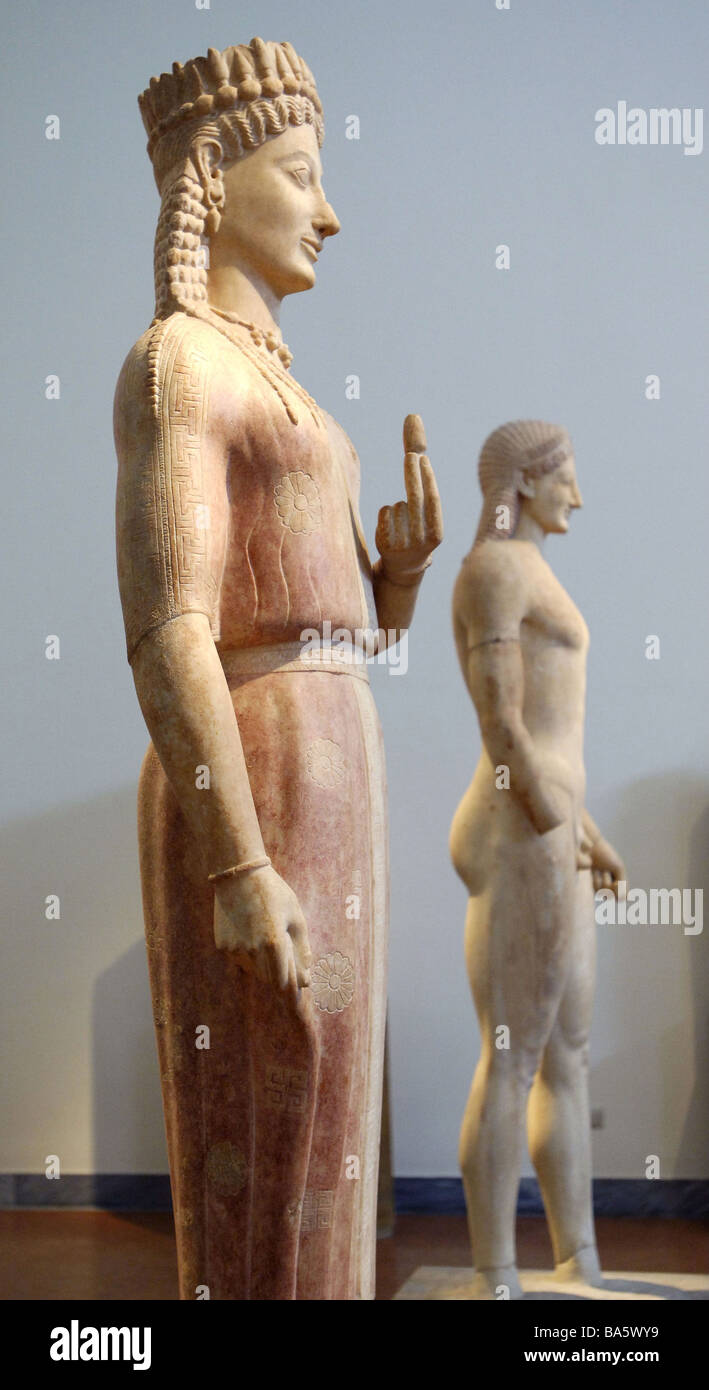
Kouros statues hires stock photography and images Alamy
The images of nude young men are today called kouroi (singular: kouros), the ancient Greek word for boy, though we do not know if they were called kouroi in antiquity. Their female counterparts, korai (singular: kore), wear richly painted robes and accessories made of expensive metals. Kouroi and korai are highly idealized images.
HISTORIA DEL ARTE KUROI Y KORAI
550-540 B.C. The Archaic kouros and kore are one of the most iconic pieces of archeological evidence from this period. These sculptures exhibit the beginning interest in human naturalism and the relationship between the drapery and body. However important the form of Archaic statuary, the function is equally important. The Phrasikleia Kore is an example, like many other kouros and kore that.
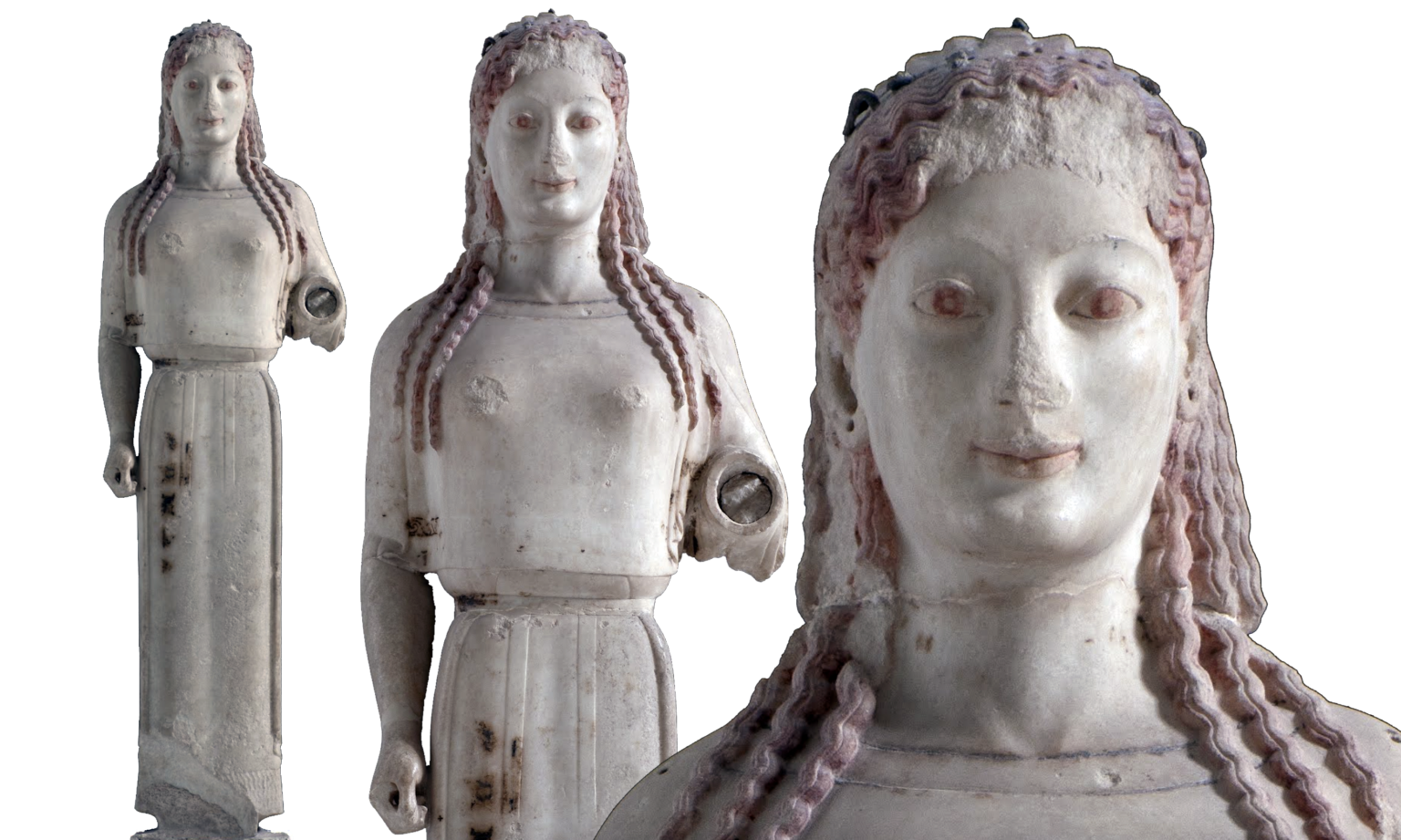
» Kouroi and Korai, an introduction
About Transcript Marble Statue of a Kouros (New York Kouros), c. 590-580 B.C.E. (Attic, archaic), Naxian marble, 194.6 x 51.6 cm (The Metropolitan Museum of Art) Speakers: Dr. Beth Harris and Dr. Steven Zucker . Created by Beth Harris and Steven Zucker. Questions Tips & Thanks Want to join the conversation? Sort by: Top Voted Shlomo Fingerer

de Artes Arte Grega (Protogeométrica, Geométrica, Orientalizante e Arcaica)
Marble statue of a kouros (youth) Greek, Attic. ca. 590-580 BCE. On view at The Met Fifth Avenue in Gallery 154. This is one of the earliest marble statues of a human figure carved in Attica. The rigid stance, with the left leg forward and arms at the side, was derived from Egyptian art. The pose provided a clear, simple formula that was used.
Kouros y kore el arte griego en el Periodo Arcaico
The text on this page is licensed under a Creative Commons Attribution 4.0 International License, unless otherwise noted. Images and other media are excluded. Kouros; about 530 B.C. or modern forgery; Unknown; Dolomitic marble; Object: 206.1 × 54.6 × 51 cm (81 1/8 × 21 1/2 × 20 1/16 in.); 85.AA.40 The J. Paul Getty Museum in Los Angeles.
